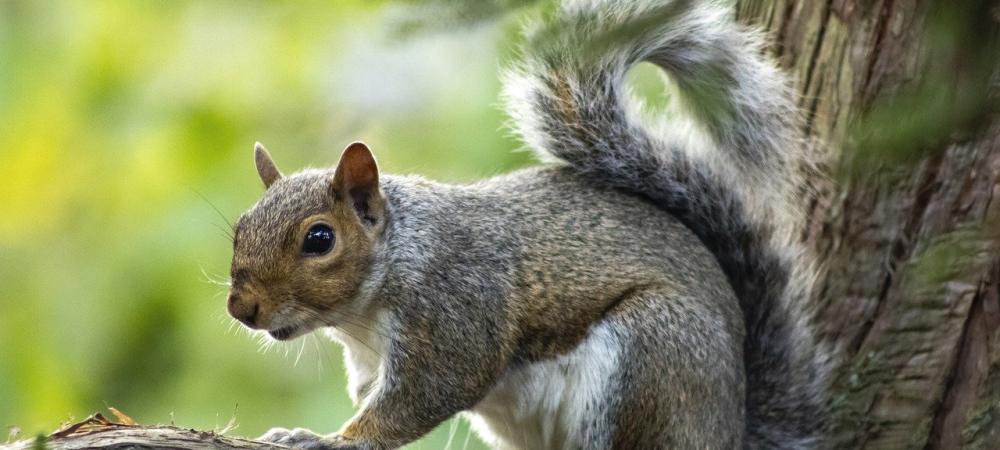Squirrels in the Attic: A Homeowner’s Guide to Dealing with an Unwelcome Guest

As a homeowner in North Carolina, you may have noticed some unexpected visitors in your attic. While squirrels are adorable creatures, having them take up residence in your attic can cause a range of problems. From chewing through wires to creating holes in your insulation, the damage they cause can be costly. In this blog, we’ll discuss how squirrels get into attics, the damage they can cause, and how to safely remove them and prevent future infestations.
Why Are Squirrels in the Attic a Problem?
Squirrels are known for their curiosity, and attics make the perfect space for them to nest, especially during the colder months. These nocturnal creatures often seek shelter from harsh weather, predators, and the breeding season. If you find squirrels in your attic, it’s typically due to the following reasons:
- Access Points: Squirrels can easily squeeze through gaps, vents, or holes in your roof or soffit. North Carolina homes, especially older ones, can provide the perfect entryways.
- Food Storage: They may be attracted to food sources in or around your home, like birdseed, fruit trees, or compost bins.
- Warmth: During the colder months, your attic offers warmth and protection from winter conditions.
Are Squirrels Dangerous to Humans?
Squirrels are generally not aggressive towards humans, but they can still pose some risks. While rare, squirrels can bite if they feel threatened or cornered. These bites can lead to infections or transmit diseases such as rabies or leptospirosis, although rabies in squirrels is extremely uncommon. Additionally, squirrels can carry fleas, ticks, and other parasites, which can be a health concern.
It’s best to avoid direct contact with squirrels and to take precautions when handling their droppings or nests in your attic. If you suspect a squirrel bite or encounter any health concerns, it's always a good idea to consult a healthcare professional.
How Did Squirrels Get Into Your Attic?
Squirrels are surprisingly skilled at getting into homes. They can fit through small gaps and climb nearly any surface. The most common ways squirrels access attics in North Carolina include:
- Gaps Around Vents and Chimneys: Older homes may have gaps around vents, chimneys, or even under roof eaves that squirrels can easily squeeze through.
- Damaged Roofs and Shingles: A missing or loose shingle creates a perfect entry point. Squirrels are excellent climbers and can scale most roof types.
- Attic Vents: Squirrels often use vents as access points to your attic, especially if the vent is damaged or doesn’t fit tightly against the wall.
- Trees and Overhanging Branches: Squirrels can jump from nearby trees directly onto your roof, especially if branches are close to your home.
What Are Common Signs You Have Squirrels in Your Attic?
The first sign of a squirrel infestation might not be an obvious sighting, but rather the sounds they make. Here are some signs that squirrels have taken residence in your attic:
- Noises: If you hear scampering, scratching, or gnawing sounds, particularly at dawn or dusk, it’s likely a squirrel (or several) running around.
- Damaged Insulation: Squirrels tend to chew on everything, including insulation and electrical wiring.
- Droppings and Nests: Finding droppings or nests made of shredded material can be a sign that squirrels have settled in.
- Visible Damage: Look for gnaw marks on wood, wires, or even your roof.
The Damage Squirrels Cause in the Attic
While squirrels may seem harmless, their presence in your attic can lead to significant damage. Here are some of the common issues they cause:
- Chewing on Wires: Squirrels chew on electrical wires, which not only damages the wires but also poses a fire hazard. The risk of electrical failure can be high if the wires are compromised.
- Gnawing on Insulation: Squirrels will often chew through insulation, reducing its effectiveness and leaving your home more vulnerable to temperature fluctuations.
- Water Damage: If a squirrel gnaws through your roof or attic insulation, it can create an opening for rainwater to seep in, causing water damage to wood, drywall, and other structures.
- Nesting Materials: Squirrels build nests using a variety of materials like insulation, fabric, and even paper. This clutter can further obstruct airflow and damage the integrity of your attic.
- Health Risks: Squirrel urine and feces can lead to unpleasant odors, and the droppings may carry diseases that could impact your health.

How Do You Get Squirrels Out of the Attic
If you suspect squirrels in your attic, it’s important to act quickly to prevent further damage. Here’s what you can do:
1. Inspect Your Home for Entry Points
Start by walking around your home and inspecting areas like the roof, vents, and eaves for potential access points. Squirrels can fit through holes as small as 1.5 inches, so look for holes, gaps, or damaged shingles that may allow squirrels to get in. You may need a ladder to inspect high spots safely.
2. Check for Active Squirrels
Before sealing any holes, make sure no squirrels are still inside your attic. A quick way to confirm is by placing a towel or cloth at the entry point. If it's moved or displaced, it indicates squirrels are still coming and going.
3. Use One-Way Exclusion Doors
If squirrels are already, installing a one-way exclusion door is a great solution. This allows squirrels to exit but prevents them from re-entering. These doors can be purchased at your local hardware store. Make sure to seal off any other entry points to force the squirrels to use this door. Once you are sure that the squirrels are out of your attic, seal up the opening permanently.
4. Trapping and Relocation
If you have active squirrels in your attic, humane trapping can also be an option. You can find live traps at your local hardware store. Once captured, make sure to release them several miles from your home, as relocating them too close may encourage them to return.
Always check your local wildlife laws before relocating squirrels. In North Carolina, squirrels can be relocated onto private property with the permission of the landowner.
5. Seal Entry Points
To seal any openings in your attic, use strong, squirrel-proof materials like galvanized steel mesh, hardware cloth, steel wool, and/or caulking. Avoid using wood or flimsy materials, as squirrels can easily chew through them. When sealing vents or holes, ensure the material is tightly secured. For larger openings, you may want to reinforce the seal with additional layers or a mesh barrier that squirrels can't chew through.
6. Install Squirrel-Proofing Measures
Consider adding mesh covers or wire netting around vulnerable areas like chimneys, vents, and soffits. Chimney caps and vent covers are also great options.
Trim branches close to the roof, as squirrels can use them to leap onto your house. You can also use squirrel-proof barriers to prevent them from climbing trees that are too close to your house.
7. Use Squirrel Repellents
Squirrels have a sensitive sense of smell and are often repelled by strong odors. Some natural repellents to try include:
- Peppermint Oil: Squirrels dislike the strong scent of peppermint. Soak cotton balls in peppermint oil and place them around the attic. You can also spray a peppermint oil solution around entry points.
- Garlic and Hot Pepper: A mixture of garlic, hot pepper, and water can be sprayed around vulnerable areas to deter squirrels from entering.
- Predator Urine: The scent of predators like foxes or coyotes can scare squirrels away. You can purchase predator urine repellents at your local hardware store, and they work well when sprayed around the attic and the exterior of your home.
Commercial repellents are also available, though their effectiveness can vary.
8. Install Motion-Activated Devices
Squirrels are cautious creatures, and sudden movements can spook them. Motion-activated lights or ultrasonic devices can deter squirrels from entering your attic by emitting sounds or flashes that they find unsettling.
9. Call a Professional
While trapping can work, it’s often best to hire a professional wildlife control company, especially if you don’t feel comfortable handling the situation yourself. Experts can safely remove the squirrels, ensuring no babies are left behind, and handle the clean-up of droppings and nests. In addition, they can help with damage repair and offer recommendations for exclusion.
10. Maintain a Regular Inspection Schedule
Even after the squirrels are gone, it’s a good idea to inspect your home regularly for any signs of new entry points or damage. Make sure your roof and gutters are well-maintained, and keep tree branches trimmed away from the house.
How to Keep Squirrels Out of the Attic
If you’re dealing with squirrels in your attic in North Carolina, it’s essential to take action promptly to prevent damage and ensure the safety of your home. Start by inspecting your property for entry points, consider humane removal methods, and seal up any gaps to prevent future infestations. By taking these steps, you can keep your home squirrel-free and avoid costly damage down the line.
If you need professional wildlife control in North Carolina, don’t hesitate to contact your local pest control experts at Bug-N-A-Rug Exterminators, who can help safely remove squirrels and protect your home from future invasions.
